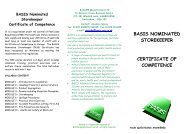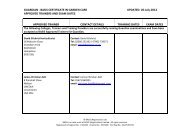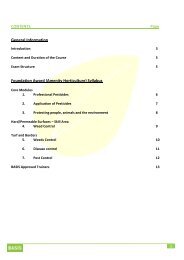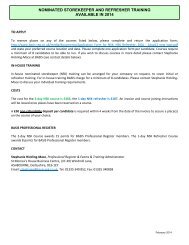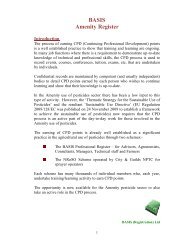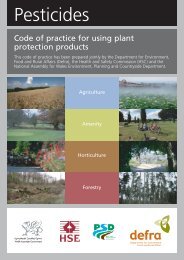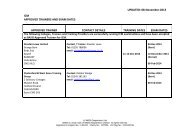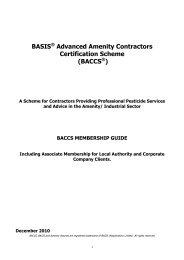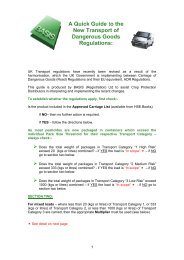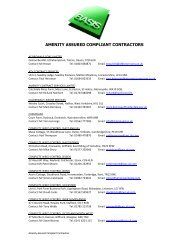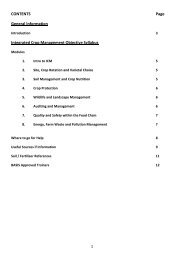FACTS Northern Ireland - Basis
FACTS Northern Ireland - Basis
FACTS Northern Ireland - Basis
You also want an ePaper? Increase the reach of your titles
YUMPU automatically turns print PDFs into web optimized ePapers that Google loves.
Aim<br />
MODULE 2 - ORGANIC NUTRIENT SOURCES<br />
To understand the role, value and nature of organic nutrient sources.<br />
2.1 Competence<br />
Candidates must be able to describe the different types of organic nutrient sources, the storage, handling<br />
and spreading properties and understand the issues involved in measuring the nutrient contribution of the<br />
materials.<br />
2.2 Performance Criteria<br />
Candidates must be able to:<br />
• appreciate the characteristics, analysis, and the short and longer term availability of nutrients<br />
contained in<br />
a) farm yard manures<br />
b) poultry manures<br />
c) sewage sludge/cake<br />
d) liquid manures/slurries<br />
e) composted organic materials<br />
f) green manure crops and other organic materials<br />
when related to specific cropping situations<br />
• appreciate factors influencing the nutrient value and plant availability of the above organic materials<br />
• understand how to prepare a manure management plan and to calculate manure/slurry storage<br />
requirements.<br />
• demonstrate an awareness of spreading techniques and pollution hazards arising from utilising organic<br />
materials<br />
2.3 Essential Knowledge & Skills<br />
Candidates must have the ability to:<br />
• explain the methods/devices for measuring the nutrient content of organic nutrient sources and<br />
application of the materials to land<br />
• interpret an analytical report for an organic nutrient source and explain the difference between total<br />
and readily available nutrients<br />
• explain the main options for improving the management of organic nutrient sources to optimise<br />
nutrient uptake by crops and grass (eg. timing and method of application)<br />
• describe the different methods for applying organic nutrient sources and explain their relative benefits<br />
• describe the pathways through which nutrients may be lost to water or the air during storage and<br />
before/after application of organic nutrient sources<br />
• demonstrate competence in advising on rates and timing of applications in relation to soil type and<br />
prevailing patterns of rainfall distribution<br />
17




